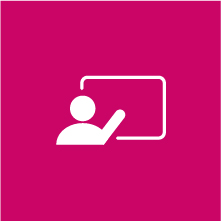The use of lecture recording (also known as lecture capture) has increased rapidly in recent years, and we are still learning about the implications of this technologically-driven change. This page brings together a range of resources to support you. There are links to practical tips and tools that you may find immediately valuable, including student-facing guidance. There are also reference materials that you can dip into as necessary, including legal considerations and a myth-busting blog.
- Highlights from ‘Lecture Capture – Doing it well and at scale’ | Association
for Learning Technology
The ALT conference Lecture Capture – Doing it well and at scale took place on the 16th June 2011 and was kindly hosted by Queen Mary, University of London (QMUL). This was an enjoyable and packed one day event, consisting of guest presenters’ experiences using a variety of lecture capture systems, short presentations from a variety of learning technology vendors and chances to speak informally with and network with like-minded colleagues. - Lecture Capture – Sometimes it’s better to be heard…and not seen | Association for Learning Technology
Why it’s sometimes better to switch off the camera. - You should record your teaching | Jill Mackay, University of Edinburgh
This blog post addresses some common concerns about lecture recording:- Students will stop showing up
- It won’t help students learn
- There’s no way to introduce lecture recording ethically in the current HE climate / Policy is hard / The union says no
- Its too technically challenging
- We just don’t have enough evidence
- It makes me uncomfortable.
- Widening participation with lecture recording | Enhancement Themes
The aim of this collaborative cluster is to develop best practice guidelines for how institutions can use lecture capture/recording to support widening access students - by allowing greater learning flexibility - and how students themselves can use it to support their diverse pathway into, and journey through, higher education. The cluster is being led by the University of Edinburgh in collaboration with the University of Glasgow and the University of Aberdeen. Follow the cluster on Twitter @LectureCPTR.
- Recording lectures and legal considerations | Jisc
Clarifying the legal aspects of recording lectures at UK further and higher education institutions.
- EngagED in... teaching with lecture recording | University of Edinburgh
This guide is designed to provide practical advice for teaching with lecture recording in ways that engage students, and which are informed by current research and best practice guidelines. - Lecture recording workshop (PDF, 0.35MB) | University of Edinburgh
The aim of this workshop is to provide a framework for exploring sensitive issues around lecture recording. The format was developed by Jill MacKay | The University of Edinburgh with the support of Jo Guz | Jo Guz Coaching , Anne-Marie Scott | The University of Edinburgh , Lorraine Spalding | The University of Edinburgh and Annie Heaney | The University of Edinburgh in conjunction with other colleagues at the University of Edinburgh. - Student revision guide (PDF, 0.03MB) | University of Edinburgh
This is a quick guide for students on how to take notes and revise using recorded lectures.
- Patterns in students’ usage of lecture recordings: a cluster analysis of self-report data | Ebbert, Stephan Dutke
Students’ usage of lecture recordings can be characterised by usage frequency, repetitiveness and selectivity in watching, lecture attendance, and social context and location in which students watch the lecture recordings. At the University of Münster (Germany), the lecture recording service was evaluated over three semesters. The data were combined and used for a cluster analysis with the aim of being able to describe the students’ distinct usage patterns. The cluster analysis was performed using partitioning around medoids with Gower distance. Five clusters of students were identified, which differed mainly on the amount of lecture recordings watched, whether the lecture recordings were watched completely or partially, whether the recordings were watched once or multiple times, and the number of lectures the students missed. The five clusters are interpreted as representing different ways of utilising lecture recordings. The clustering provides a basis for investigating the usage of lecture recordings in the context of different approaches to learning and learning strategies. - Lecture capture and peer working: exploring study practices through staff–student partnerships | Geraint Evans, Karl Luke
As lecture capture technology and practice become ever more widespread in UK universities there is a growing body of literature that assesses the impact of these changes. However, there is still much to be understood about lecture capture and the full impact on student learning, especially in different institutional and subject contexts. This article describes two projects from a UK Russell Group University that worked in partnership with students to gain insights into the student experience regarding lecture capture. The article highlights insights gained in terms of how and why students use lecture recordings. This article focuses on one area in particular which has been less reported and warrants further investigation – students’ use of lecture recordings in collaborative settings. The article considers some practical implications of such insights and argues that a nuanced understanding regarding the way students use lecture recordings for learning is required. The article also highlights how educationists can harness student partnerships to further our understanding of the complex interplays between technology and student learning. - What can we learn from learning analytics? A case study based on an analysis of student use of video recordings | Moira Sarsfield, John Conway
Over recent years the use of lecture capture technology has become widespread in higher education. However, clear evidence of the learning benefits of this technology is limited, with contradictory findings reported in the literature. The reasons for this lack of consistent evidence may include methodological issues and differences in the context of previous studies. This paper describes a study using server log data to explore student use of video recordings quantitatively in the context of science courses at Imperial College London. The study had two aims: to understand more about the general principles that underpin a learning analytics study and to seek answers to the following specific research questions: (1) How much use is made of video recordings? (2) How does the use of recordings in a module vary over time? (3) Is the use of recordings different for different modules or subjects? (4) Is the use of recordings different for subgroups of students, for example, students with specific learning differences or English as a second language, students attaining different grades? (5) Is the use of recordings different for different types of content? Using learning analytics enabled the discovery of context-specific actionable insights: recommendations for both staff and students and ideas for further research. General conclusions were also drawn on how best to undertake learning analytics studies in order to deliver evidence and insights to improve learning and teaching. - Students and recorded lectures: survey on current use and demands for higher education | Pierre Gorissen, Jan van Bruggen, Wim Jochems
Online recordings of lectures provide students with anytime-anyplace access to lectures. Research shows that students prefer courses accompanied by online recordings and an increasing number of universities provide recorded lectures. This paper presents the results of a study into the use of recorded lectures at two universities in the Netherlands. The goal of the study is to gain a better understanding of the way that this group of students use recorded lectures. This understanding will enable the creation of usage scenarios that need to be supported. Our results show that students use recorded lectures as a replacement for missed lectures and for study tasks, like preparing for an exam. A large proportion of the students report that they watch 75100% of a recorded lecture when the view one. The fact that students did not mention the quality of the actual lectures appears not to influence the use of the recorded lectures. Recorded lectures for courses that only use the blackboard are viewed less often. There are also interesting differences in the use of recorded lectures of the different groups of students at the two universities. To increase the credibility and validity of the results, we need a more direct way to measure the use of recorded lectures by students. Methodological triangulation using the log data for the recorded lectures can provide this. - Web-based lecture technologies: blurring the boundaries between face-to-face and distance learning | Karen Woo, Maree Gosper, Margot McNeill, Greg Preston, David Green and Rob Phillips
This research paper reports on a selection of results from a larger research project investigating the impact of web-based lecture technologies, including lecture recording, on teaching and learning.
Accessibility and lecture recording | Jill Mackay, University of Edinburgh
In this short video, Jill Mackay explains how the Covid-19 pandemic might result in fresh thinking about how we use technology
such as lecture recording to make teaching more accessible in the longer term.
How do we really record lectures? | Jill Mackay, University of Edinburgh
The University of Edinburgh has equipped over 400 teaching spaces with a centrally provided lecture recording service. The University
of Edinburgh used mixed methodologies to explore how staff and student experiences were affected, including National Student Survey, Course Evaluation Questionnaires, and service data. This webinar explored how the University engaged with all available
evidence regarding student experience, and shared how they have been developing teaching practice in response.
How to get the most out of lecture recording | Emily Nordmann, University of Glasgow and Jill MacKay, University of Edinburgh
Recording of a presentation from the University of Edinburgh Lecture Capture
Symposium on 31 January 2019.
Study skills and strategic use of lecture capture | Emily Nordmann, University of Glasgow
In her keynote from Eduhub 2020, Emily Nordmann
discusses the evidence concerning how students learn with lecture capture and argues that we need to move away from the idea of lecture capture as a novel technology that sits separate from other study activities. Instead, she suggests that we should
consider how lecture capture relates to general study skills, and presents new data that helps explain how and why our students use recordings | and how we can help those who need it.

